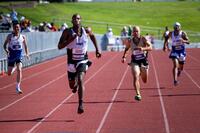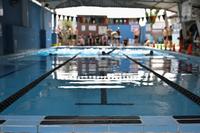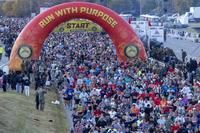We all have heard not to "train for the test" when it comes to tactical fitness, and this statement is true. However, the results of a test will determine whether you get into the military as a recruit, stay in the military or advance to more selective training (special ops, Officer Candidate School (OCS), ROTC, service academy).
These tests matter significantly to your future. While it is true that training for the fitness test that includes push-ups, sit-ups, and a 1.5-mile run is only preparing you for the test and perhaps not the actual demands of a military job, there is a time when training specifically for the test is necessary.
The acronym used to describe an ideal fitness program is FITT, which stands for frequency, intensity, time and type. The secret to passing any fitness test is found in this acronym.
Frequency
You must practice consistently to see results. This schedule can be every other day on a regular basis for several weeks, months or daily, depending on your preference and abilities. If you're looking to pass a fitness test, this would mean to do your testing events every other day if upper-body calisthenics and running are on the test.
If you needed to limit your overall volume of running, you could do your calisthenics, followed by a run of test length on Monday, Wednesday and Friday. On the days in between, you could mix in some non-impact cardio and leg calisthenics (squat, lunges) to aid in preparing the legs and lungs for the running event, minus the impact.
Intensity
When you practice running and calisthenics for a fitness test, intensity also matters. Get used to running and doing higher-repetition calisthenics at a goal pace well above the minimum standards. Time spent doing longer, slower distances may not be the best option if you need to run a short and fast pace in order to pass a PT test.
For both the calisthenics and the cardio events of a PT test, moving with a purposeful pace is the key to your success. If you need to do 80 sit-ups in two minutes, you need to work on a pace of 20 sit-ups in 30 seconds and build up to two minutes.
The same goes for the run pace. If you need to run a seven-minute mile, you need to practice the pace of 1:45 for 400 yards and 3:30 for 800 yards to eventually do a seven-minute mile pace for the distance of your PT Test.
Time
The amount of time each day you devote to the test is also important, but it does not have to be hours. In fact, you can block out 15 minutes of calisthenics workouts in the morning and 15 minutes of running in the afternoon if time is tight for you on any given day.
The time you spend each day (or every other day) on fitness can be molded to fit into your schedule. After all, most fitness tests in the military take from less than 15 minutes to 30 minutes of actual exertion time as they advance.
The most important factor of time is consistency and frequency of your training. You will typically need a four- to eight-week phase of training before your test for best results.
Type (Specifics)
This is the key. No matter what you are testing, your workouts must be specific to the exercises being tested if you want to improve those test scores. If it is the events of the Army Combat Fitness Test (ACFT), then get in the weight room and mix lifting (deadlift) with calisthenics, shuttle runs with weight and two-mile run workouts.
If it is simply calisthenics (push-ups, pull-ups, sit-ups or plank, and run), then you can do more with less equipment as you specifically train for the test.
Your success with this type of training also depends on your technique and how you efficiently perform the exercises. Practice is needed, but perfect practice is preferred.
You do not want to spend your entire year training specifically for a test, though the newer tactical fitness tests like the ACFT represent better models of training that force practicing strength, power, speed and agility, as well as the standard muscle stamina and cardio endurance (basic calisthenics and cardio PT tests).
Depending on your job and your future goals, your ability to get good at all the tactical elements of fitness may be required. Do not neglect training specifically for objective graded events as well as the more all-encompassing physical challenges of the day-to-day activities in the profession.
Stew Smith is a former Navy SEAL and fitness author certified as a Strength and Conditioning Specialist (CSCS) with the National Strength and Conditioning Association. Visit his Fitness eBook store if you're looking to start a workout program to create a healthy lifestyle. Send your fitness questions to stew@stewsmith.com.
Want to Learn More About Military Life?
Whether you're thinking of joining the military, looking for fitness and basic training tips, or keeping up with military life and benefits, Military.com has you covered. Subscribe to Military.com to have military news, updates and resources delivered directly to your inbox.


















